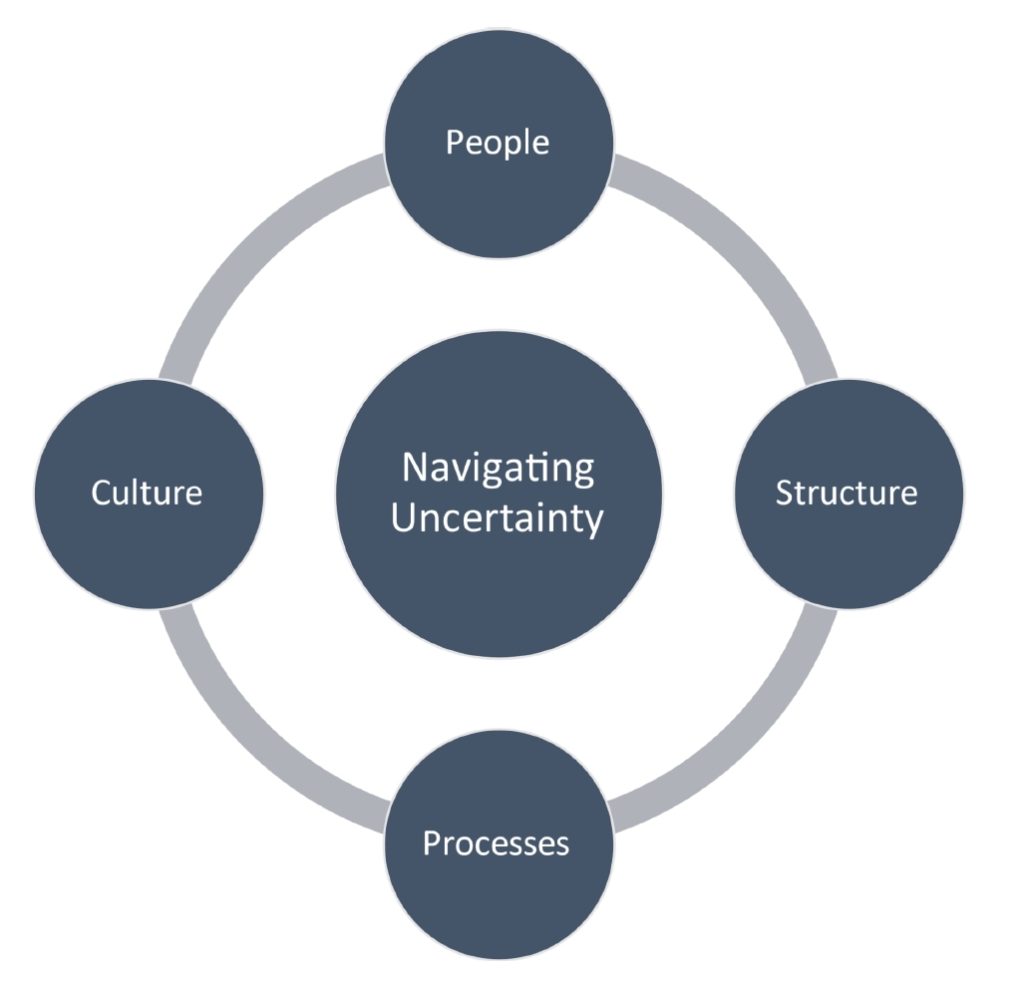Looking At the Consequences Eight Layers Down: Institutionalizing Readiness in Disaster Response Organizations
DOI:
https://doi.org/10.25071/73zdaz56Abstract
Is your organization ready to survive and exploit the opportunities that arise in every crisis? Disasters are increasing in scale, scope, and complexity and the structures currently in place are not designed to handle the now-common ‘disaster within a disaster’. The COVID-19 pandemic has shown us that our current systems need revision and updating. Black Swan events—the exceedingly rare and highly disruptive events that can trigger existential crises for organizations and societies (Taleb, 2010)—once seen as generational events are now commonplace, interrelated, and compounding components of daily life (Kayyem, 2022; Marcus et al., 2019; Roux-Dufort, 2007). Despite this reality, the reactive design of many humanitarian and disaster response organizations leaves them vulnerable during major events thus at risk of being unable to fulfil their mandates. The mantras “it cannot happen here” and “it will not happen again” are naïve and dangerous.
References
Alperen, M. J. (2017). Resiliency and a Culture of Preparedness. In Foundations of Homeland Security: Law and Policy, Second Edition (pp. 397-406). Hoboken, NJ: John Wiley & Sons, Inc. https://onlinelibrary-wiley-com.login.ezproxy.library.ualberta.ca/doi/pdf/10.1002/9781119289142
Beckford, J. (2022, September 01). A Systemic Perspective on National Preparedness. National Preparedness Commission: https://nationalpreparednesscommission.uk/2022/09/a-systemic-perspective-on-national-preparedness/
Bundy, J., Pfarrer, M. D., Short, C. E., & Coombs, W. T. (2017, July). Crises and Crisis Management: Integration, Interpretation, and Research Development. Journal of Management, pp. 1661-1692. https://journals.sagepub.com/doi/full/10.1177/0149206316680030
Coombs, W. T. (2009). Conceptualizing crisis communications. In R. L. Heath, & H. D. O’Hair, Handbook of Risk and Crisis Communication. New York: Routledge.
Cooper, T. R. (2019). Creating a Culture of Preparedness. https://www.ncbi.nlm.nih.gov/pmc/articles/PMC8352363/pdf/djph-54-003.pdf
Coppola, D. P. (2015). Introduction to International Disaster Management, Third Edition. Boston: Butterworth-Heinemann.
Covello, V. T. (2003). Best practices in public health risk and crisis communication. Journal of Health Communication, 5-8. https://www.tandfonline.com/doi/abs/10.1080/713851971
Deloitte. (2022). The Adaptable Organization. https://www.deloitte.com/global/en/services/consulting/content/the-adaptable-organization.html
Gioia, D. A., Corley, K. G., & Hamilton, A. L. (2013). Seeking Qualitative Rigor in Inductive Research: Notes on the Gioia Methodology. Organizational Research Methods, 16(1), 15–31.
Heath, D. (2020). Upstream: The quest to solve problems before they happen. New York: Avid Reader Press.
Kapucu, N., & Özerdem, A. (2013). Managing Emergencies and Crises. Burlington, MA: Jones & Bartlett Learning.
Kayyem, J. (2022). The Devil Never Sleeps: Learning to live in an age of disasters. New York: PublicAffairs.
Marcus, L. J., McNulty, E. J., Henderson, J. M., & Dorn, B. C. (2019). You’re It: Crisis, change, and how to lead when it matters most. New York: PublicAffairs.
Mileti, D. S. (1999). Disasters by design: a reassessment of natural hazards in the United States. New York: Joseph Henry Press.
Paton, D., & Johnston, D. (2017). Disaster Resilience: An integrated approach, Second Edition. Springfield, IL: Charles C Thomas Publisher, Ltd.
Pearson, C. M., & Mitroff, I. I. (1993, February 1). From crisis prone to crisis prepared: a framework for crisis management. Academy of Management Executive, pp. 48-59. https://eds-s-ebscohost-com.login.ezproxy.library.ualberta.ca/eds/pdfviewer/pdfviewer?vid=1&sid=4a09644e-d42c-42c3-b29e-8f6c232a0689%40redis
Pine, J.C. (2014). Hazard Analysis: Reducing the impacts of disasters, Second Edition. Boca Raton: CRC Press.
Roux-Dufort, C. (2007, May 04). Is Crisis Management (Only) a Management of Exceptions? Journal of Contingencies and Crisis Management, pp. 105-114.
Taleb, N. N. (2010). The Black Swan: The Impact of the Highly Improbable, Second Edition. New York: Random House.
Taleb, N. N. (2012). Antifragile: Things That Gain from Disorder. New York: Random House.

